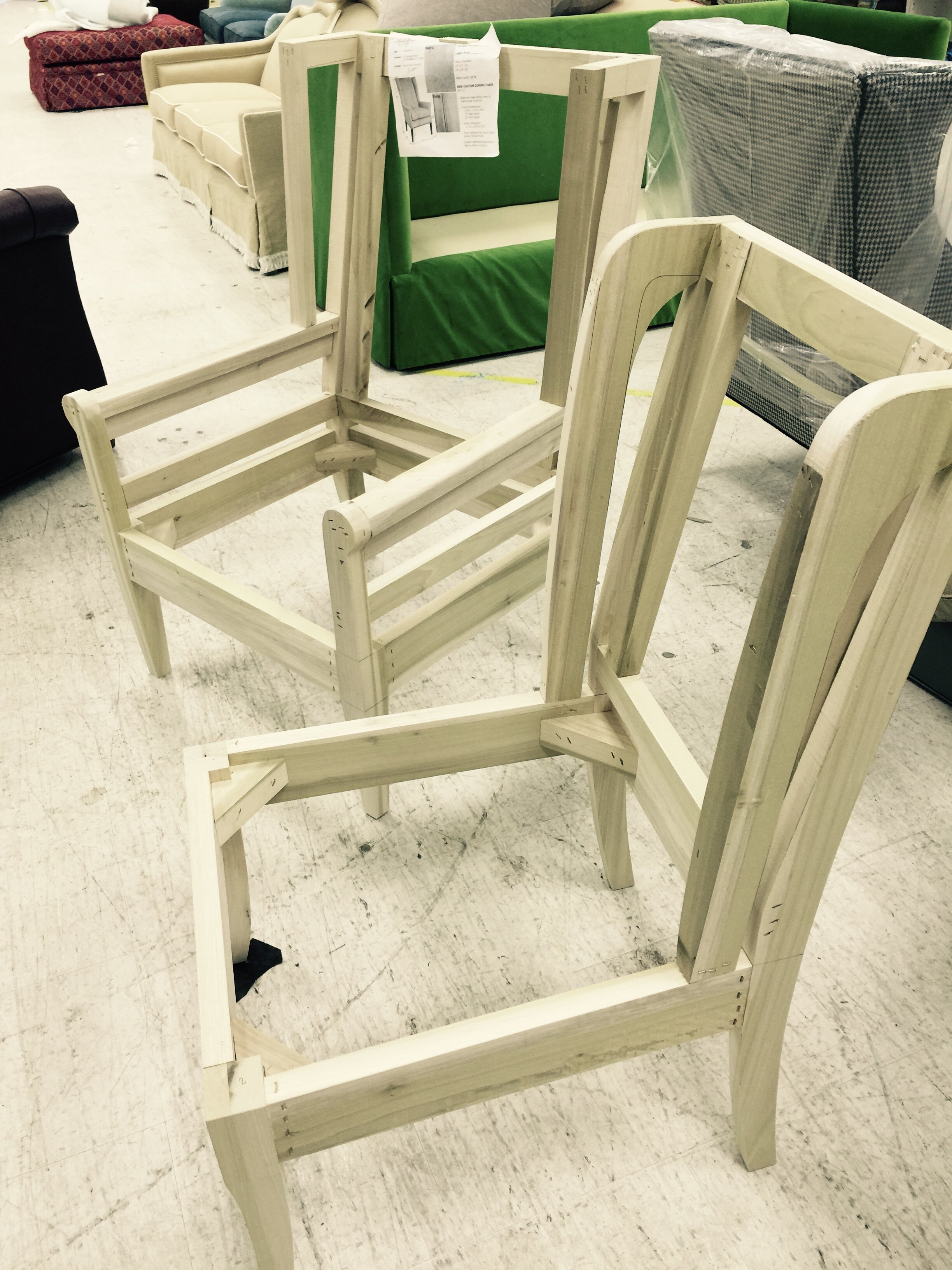As if lead times and back orders on furnishings weren’t bad enough in 2020 and 2021, it looks like there isn’t much hope in sight for things to get back to normal in the near future. As a matter of fact, some manufacturers are advising their customers (designers and retailers) to order now for summer 2022 delivery.
That’s a one year lead time!
I wrote, back in April, about some of the issues at hand then and how you should order right away to get things in by the holidays 2021. Well, a lot has changed in past 5 months.
There is much being reported about what is going on in Viet Nam and Maylasia recently, as these countries have been shut down in response to the surge there in the pandemic.
While I had some products that had long lead times this past year, I was able to circumvent some problems and get product in a more reasonable amount of time by using quick ship items and locally made products.
I sourced and delivered this loft space of furniture in about 8 weeks this past spring, from date of purchase, for this client. (And that was lucky and I was juggling and holding my breath just about the whole time!)
The upholstered pieces, rugs, and other furnishings items in this loft were either on quick ship with one of my usual vendors with fabric being in stock, or were in stock, ready to ship. The shipping took almost as much time as the manufacture of these products, as shipping times are horrendously slow within the US these days. carlaaston.com
What is typical (and very stressful) is to order something that shows in stock and then by the time the order is processed it is gone with no new stock expected until….???
Just like the Wayfairs and Pottery Barns of the world, they take your order, everything seems like it is going okay, you might even get a ship date, but then it gets pushed back, again and again and again.
So, unless I can feel really sure product is available to order or is on a quick ship status (where it won’t be really quick, but quicker than the super long lead times reporting now) then I likely won’t suggest it for a project.
Sourcing Products Takes Longer Than Ever Before
If you’ve been on any online retail sites these days looking for furniture, you can see how sooooo much is labeled “out of stock” right now. Wayfair has put up big signs over their products showing this info, as I’m sure they’ve had so many complaints from people choosing products and trying to order stuff that was backordered with no definite delivery date in sight.
That info seen on websites is often unreliable, as it can show “in stock” but actually be out of stock by not being updated with the latest info on the website. And it is often not Wayfair’s or the retailer’s fault necessarily, it is usually the fault of the vendor, who has little staff available to do updates like this as they are thinly staffed with different priorities and are just trying to do the best they can at this point.
When I source products for my full service projects, I first look at the online info (I have my own log ins and portals as a buyer of their products), and I usually verify that with an email to my rep or call to the factory.
The biggest problem in sourcing these days is that it takes these extra steps AND there are so many fewer items to choose from than normal.
It makes putting together a design scheme rather limiting and makes for a much longer search process to get a look pulled together that is appropriate for a client.
Products Made in the USA
You might think that going with products labeled “Made in the USA”, with vendors who advertise that, would be a faster delivery. Well, that is not necessarily true.
More than likely, many of the parts and pieces that the US factory assembles here, is sourced overseas. Everything from screws to the fretwork detail like the one on the back of this chair (from a “Made in the USA” vendor), are sourced overseas.
One of the reasons I chose this chair for my project is because of the fret detail on the backs. :-) carlaaston.com
We waited an additional 2-3 months for these chairs because this particular fret detail became out of stock by the time my order was processed in their system. The company already had my money, the frames were prepped and the fabric had been shipped to them, awaiting production, so there was no turning back for me. I just had to wait the delivery out.
Luckily I had a patient client! :-)
This is typical of vendors where products are claimed to be made here, and they are really telling the truth.
It’s just like every other industry out there that has different parts and pieces of their products sourced from all over the world. The company is trying to get the best value for the money for their products so they can deliver a fair price to the US consumer.
Here’s when I learned more about how sourcing parts for furnishings works…
Years ago I had a remote client who used to work in the United Nations. It was really important to her to get only “Made in the USA” products as she was very aware of underage workers, etc. in foreign countries and took a social stance against buying products from outside the US. Nothing could come from outside of the USA for her project.
I didn’t think much about it, as I did know of vendors that claimed “Made in the USA”, so I didn’t think it would be a problem, until I got into the sourcing. I soon realized that most textiles come from mills overseas. So, most upholstery is not fully “Made in the USA”.
That project took me forever to source and I lost my shirt on that fee!
Shipping within the USA
While I might be able to get a custom sofa from a quick ship program ready to ship in 4 weeks or 6 weeks today, it likely will take that time frame or longer, to ship it across a few states.
I have tracked orders recently and had items sitting in trucking distribution centers waiting for trucks, waiting to be delivered to my warehouse, etc. for weeks. That is just the state of the shipping industry right now. There are not enough trucks and not enough drivers for US shipping and products are piling up.
That’s one reason I like to use some of my local vendors, even if they might take a little longer. At least I can just get a local delivery vs. shipping from out of state.
Chair frames for a project from a local vendor who makes custom furniture. carlaaston.com
Again, they are busy too, so manufacturing time is not faster necessarily, but at least it limits shipping time and damages that might occur with all that transfer of product during the shipping process.
Of course, you are more limited with the type of product and the pricing might be higher, with locally sourced items. It all has to be weighed with the needs of the project.
Two vendors that are truly “Made in the USA”
When I attended the Lightovation show in Dallas this summer (read my trend report here), I stopped by the Hubbardton Forge showroom in Market Hall. I knew their products were US made, but didn’t realize they are truly all made here.
This orb pendant fixture from Hubbardton Forge was the perfect minimalist / Craftsman style for this kitchen project.
The Hubbardton Forge orb pendant was the perfect choice for this modern Craftsman style kitchen. carlaaston.com
I have a Hubbardton Forge fixture in my own home office above my work surface!
I love the sleek curved detail of this Hubbardton Forge fixture for my home office. It worked so well with the pattern of the doors and the rug. :-) carlaaston.com
The reps in the showroom proudly shared their American made story in my tour and reported they had a manufacturing time of 3 weeks and were holding steady to that. They reiterated that they didn’t rely on any overseas parts or shipping, so they were able to keep up with their production at this time.
Another manufacturer that is fully made in the USA is Charleston Forge, a furniture manufacturer in North Carolina. I’ve used tables and consoles from their collections before on projects and they have beautiful woods and finishes.
Their website states:
“More than 90% of our suppliers are located within 100 miles of our factory, which helps minimize the impact of transportation of materials.”
This round coffee table in one of my projects is from Charleston Forge, with a beautiful wood top and metal base. carlaaston.com
The cool ottoman / coffee table on my project pictured here was from Charleston Forge also. It was upholstered in our fabric from another vendor and customized in a special finish. carlaaston.com
I have nothing against vendors that source from overseas. I’m all about getting good pricing for materials and parts to get the best product, for sure. I like getting the best value for my money spent on product.
I do think it is helpful to get the message out though, about product availability and shipping, as much as possible, so people can temper their expectations. It’s always good to be prepared.
Unfortunately, it appears that the whole process will be a bit challenging in the next year or so at least. :-)
Pin this image below to Pinterest to share or save for later reference!










